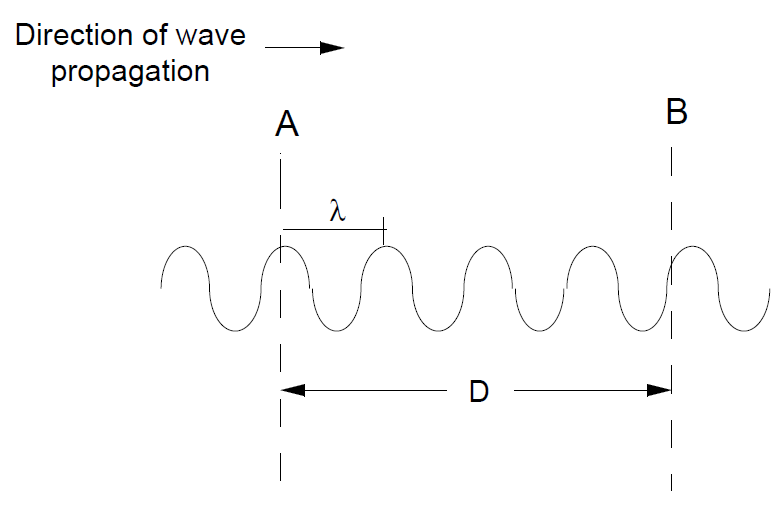


 الفيزياء الكلاسيكية
الفيزياء الكلاسيكية
 الكهربائية والمغناطيسية
الكهربائية والمغناطيسية
 علم البصريات
علم البصريات
 الفيزياء الحديثة
الفيزياء الحديثة
 النظرية النسبية
النظرية النسبية
 الفيزياء النووية
الفيزياء النووية
 فيزياء الحالة الصلبة
فيزياء الحالة الصلبة
 الليزر
الليزر
 علم الفلك
علم الفلك
 المجموعة الشمسية
المجموعة الشمسية
 الطاقة البديلة
الطاقة البديلة
 الفيزياء والعلوم الأخرى
الفيزياء والعلوم الأخرى
 مواضيع عامة في الفيزياء
مواضيع عامة في الفيزياء|
Read More
Date: 8-9-2020
Date: 3-3-2016
Date: 25-8-2020
|
Frequency and Wavelength
As the radiation propagates at a given frequency, it has an associated wavelength that is, the distance between successive crests or successive troughs. Wavelengths are generally given in meters (or some decimal fraction of a meter) or Angstroms (Å, 10-10 meter).
Since all electromagnetic radiation travels at the same speed (in a vacuum), the number of crests (or troughs) passing a given point in space in a given unit of time (say, one second), varies with the wavelength. For example, 10 waves of wavelength 10 meters will pass by a point in the same length of time it would take 1 wave of wavelength 100 meters. Since all forms of electromagnetic energy travel at the speed of light, the wavelength equals the speed of light divided by the frequency of oscillation (moving from crest to crest or trough to trough).
In the drawing below, electromagnetic waves are passing point B, moving to the right at the speed of light (usually represented as c, and given in km/sec). If we measure to the left of B a distance D equal to the distance light travels in one second (2.997 x 105 km), we arrive at point A along the wave train that will just pass point B after a period of 1 second (moving left to right). The frequency f of the wave train that is, the number of waves between A and B times the length of each, λ, equals the distance D traveled in one second.
Relationship of Wavelength and Frequency of Electromagnetic Waves

Since we talk about the frequency of electromagnetic radiation in terms of oscillations per second and the speed of light in terms of distance travelled per second, we can say
Speed of light = Wavelength x Frequency
Wavelength = Speed of light / Frequency
Frequency = Speed of light / Wavelength
or
c = λ f



|
|
|
|
التوتر والسرطان.. علماء يحذرون من "صلة خطيرة"
|
|
|
|
|
|
|
مرآة السيارة: مدى دقة عكسها للصورة الصحيحة
|
|
|
|
|
|
|
نحو شراكة وطنية متكاملة.. الأمين العام للعتبة الحسينية يبحث مع وكيل وزارة الخارجية آفاق التعاون المؤسسي
|
|
|